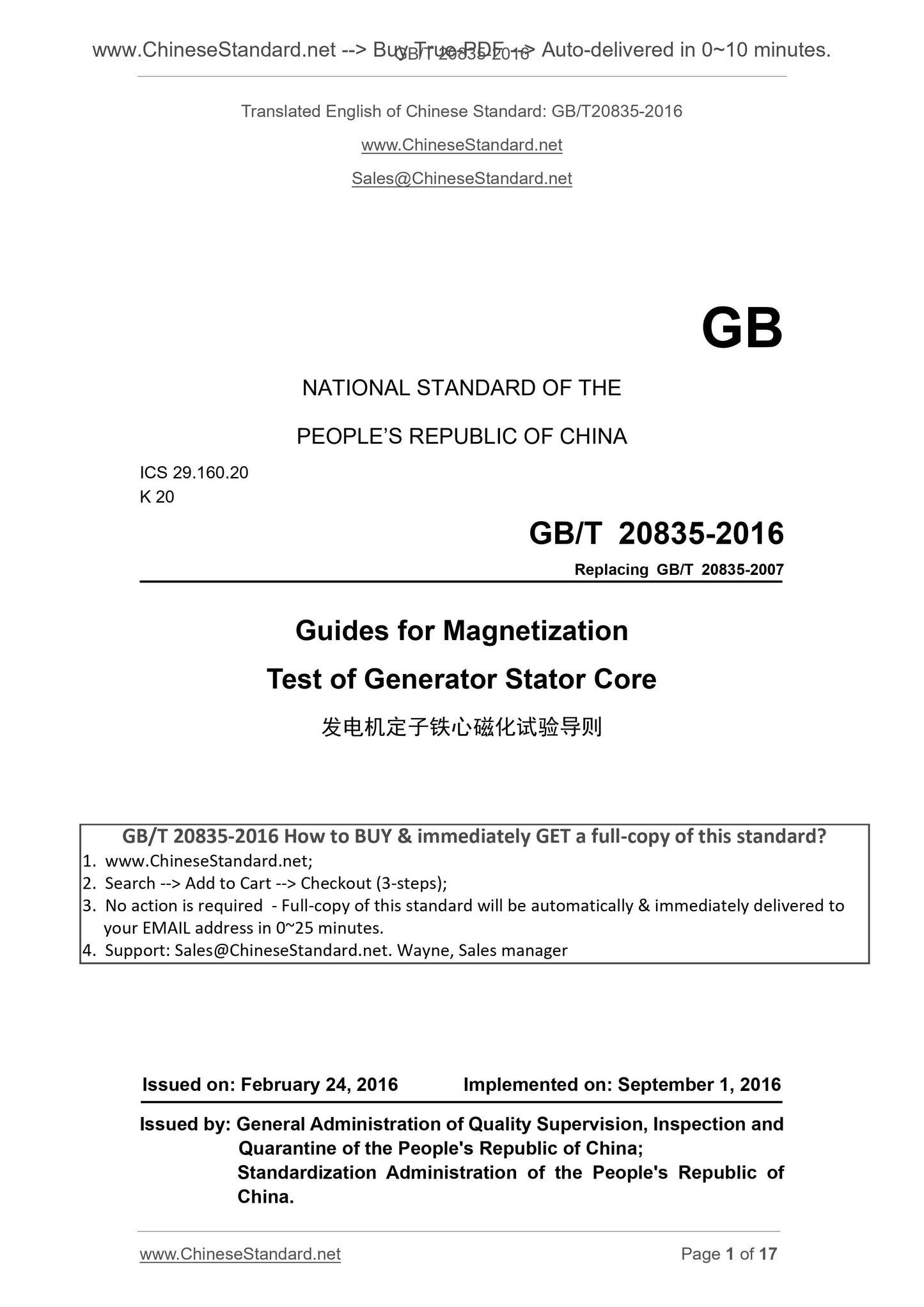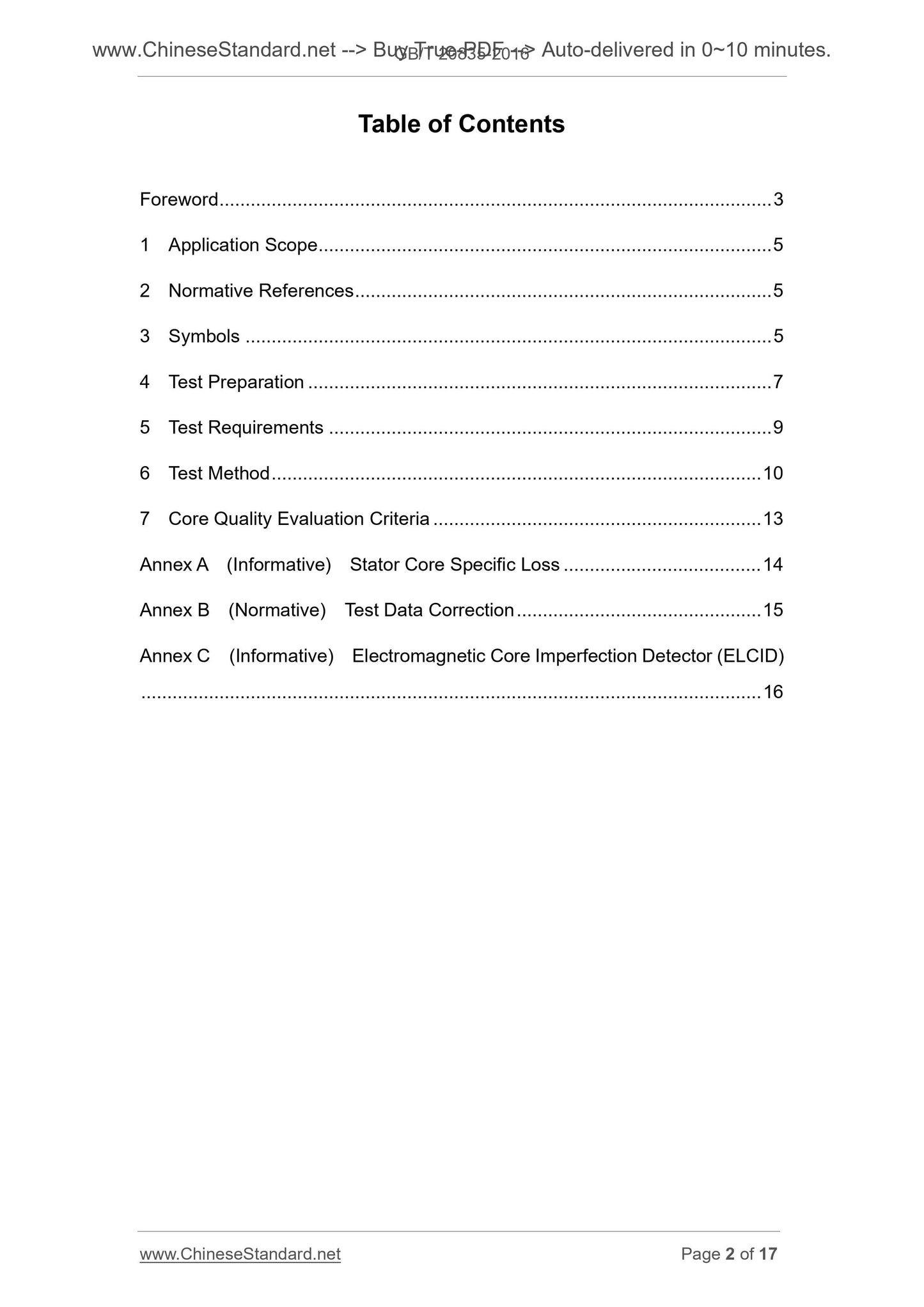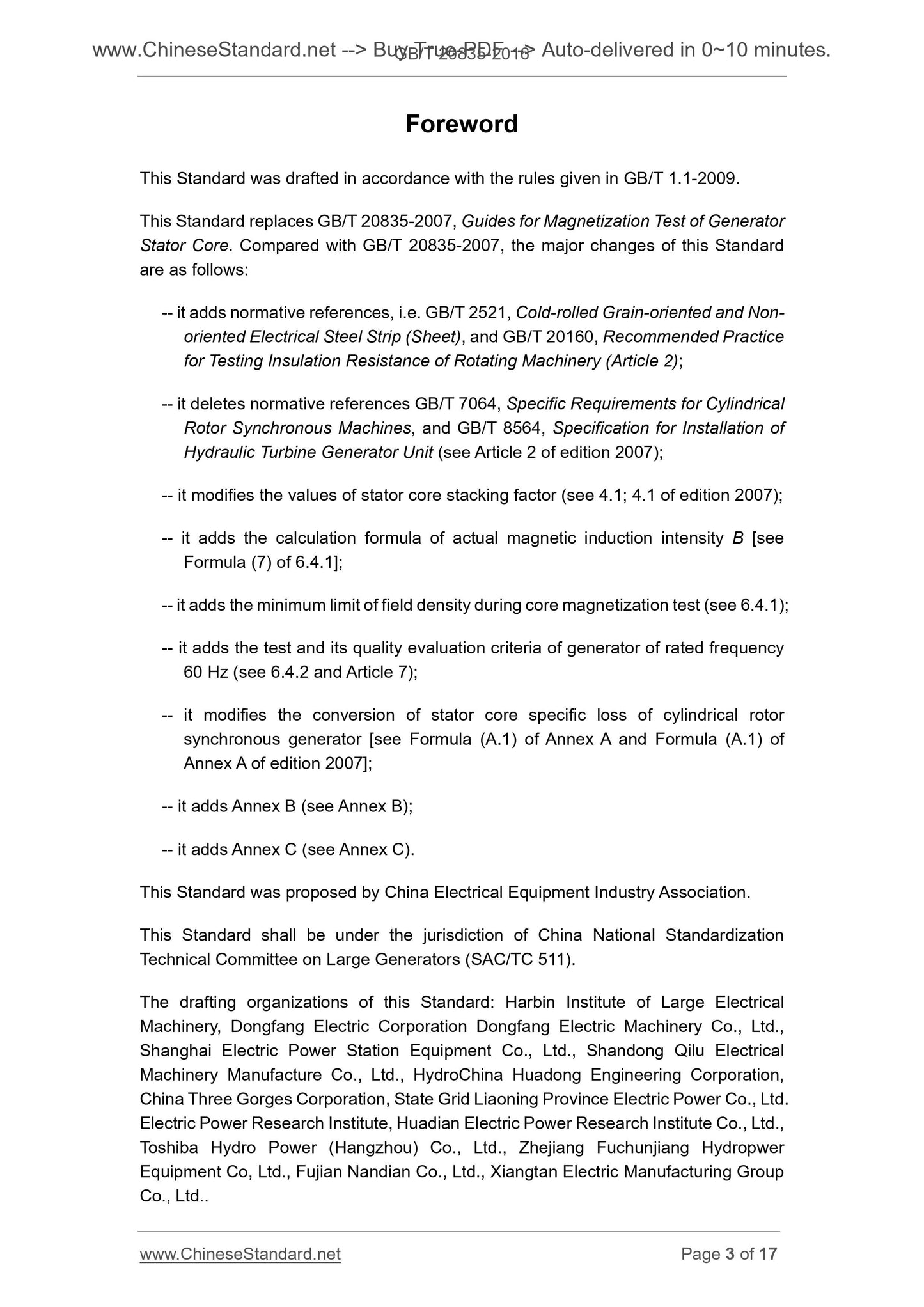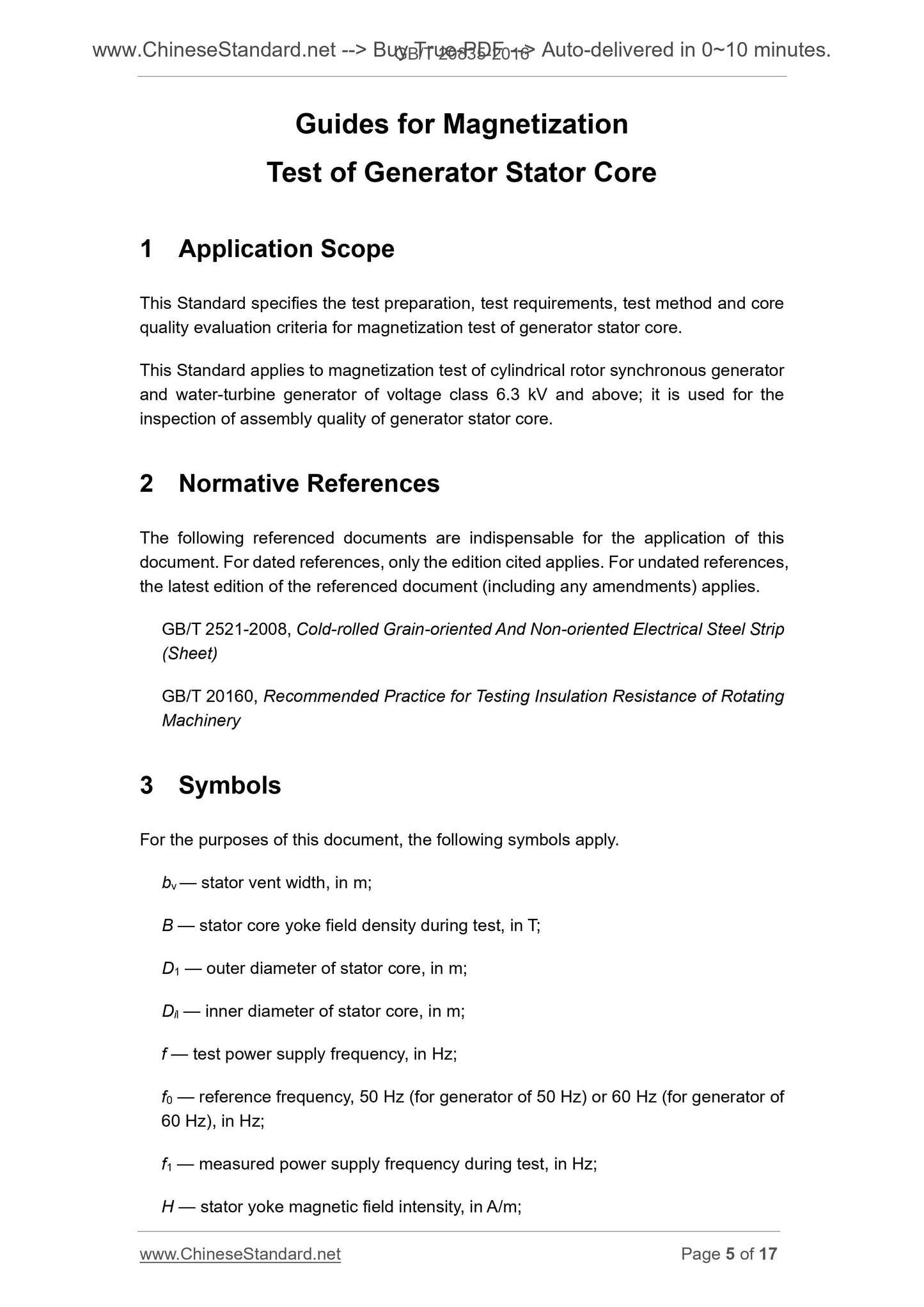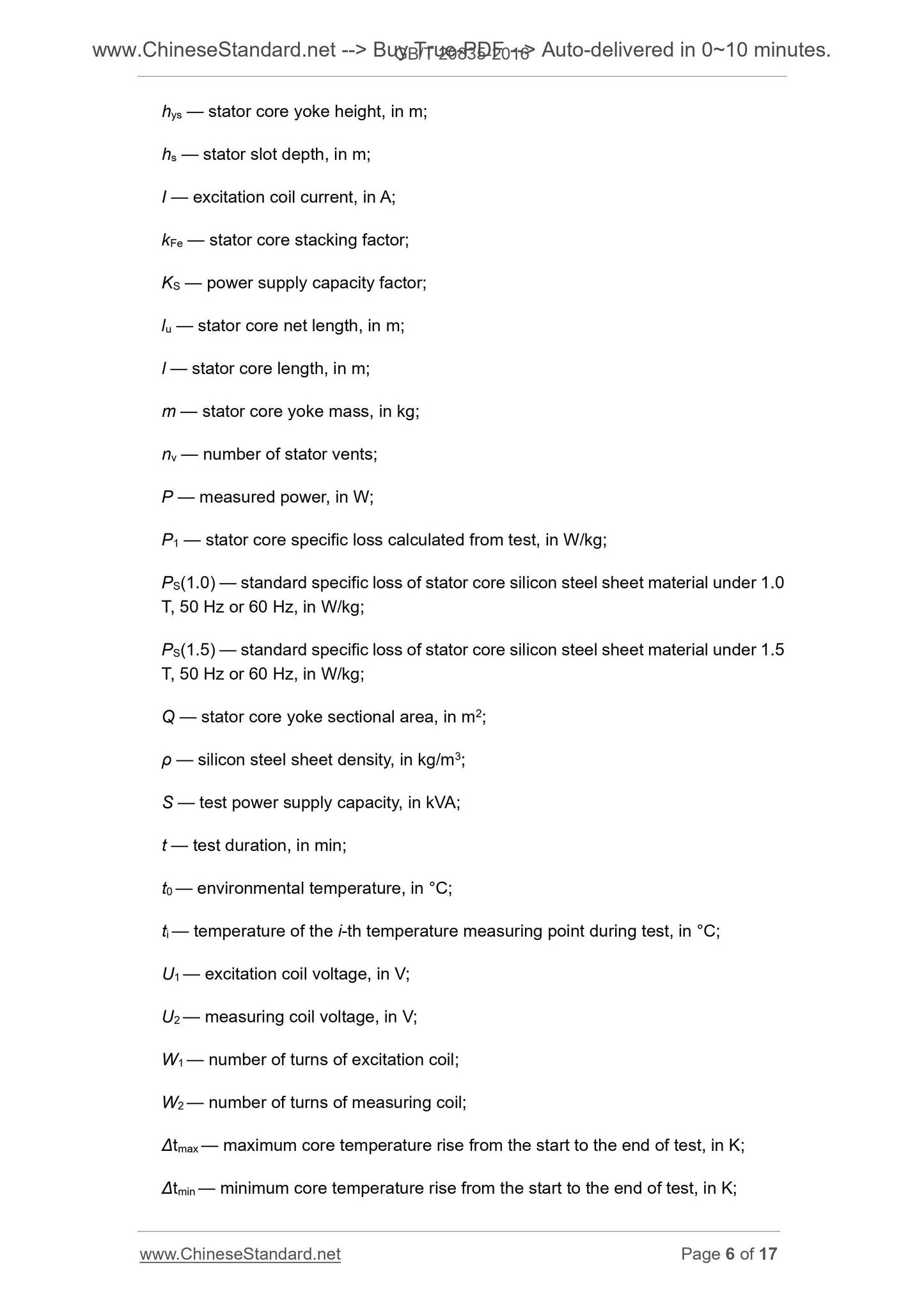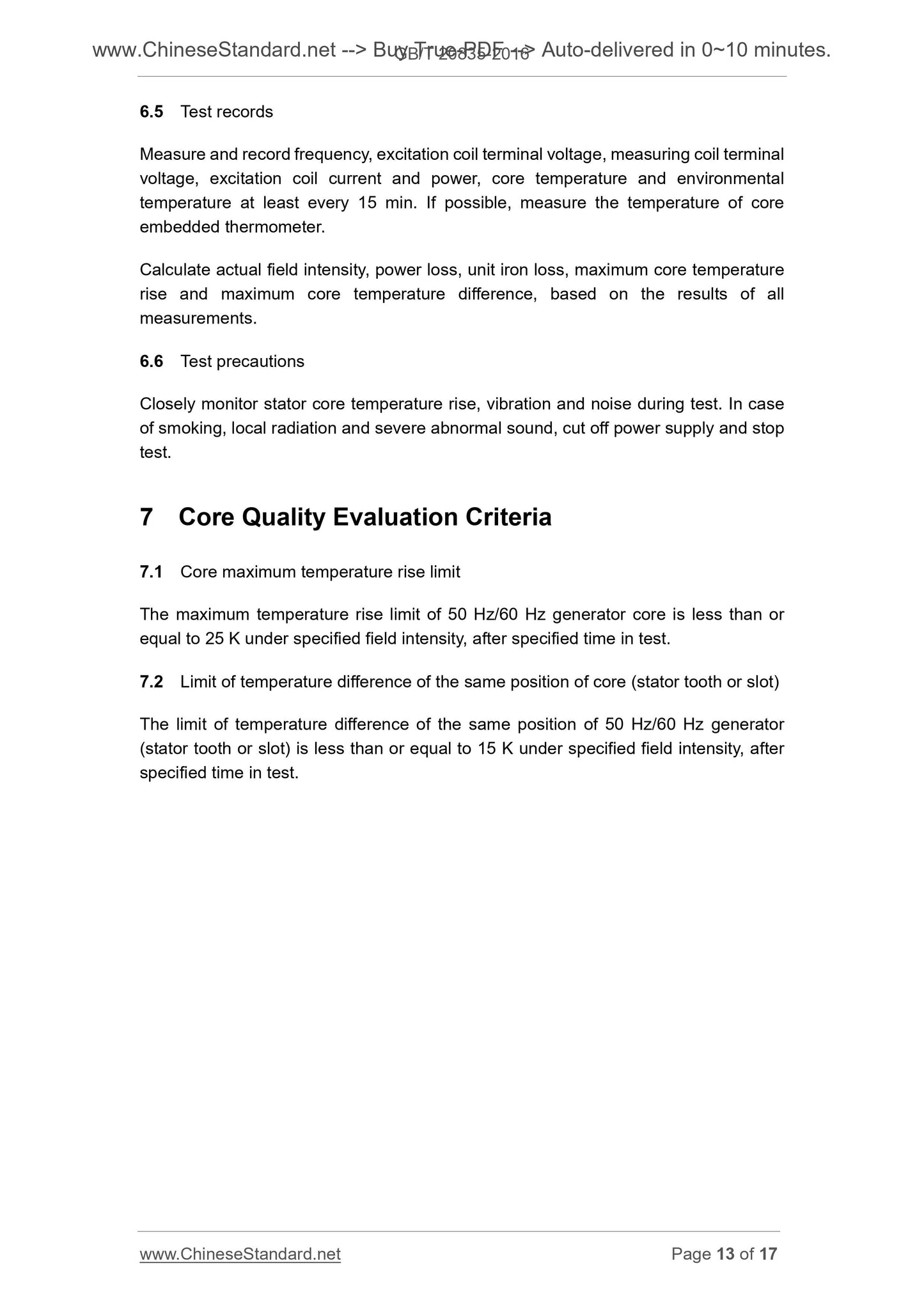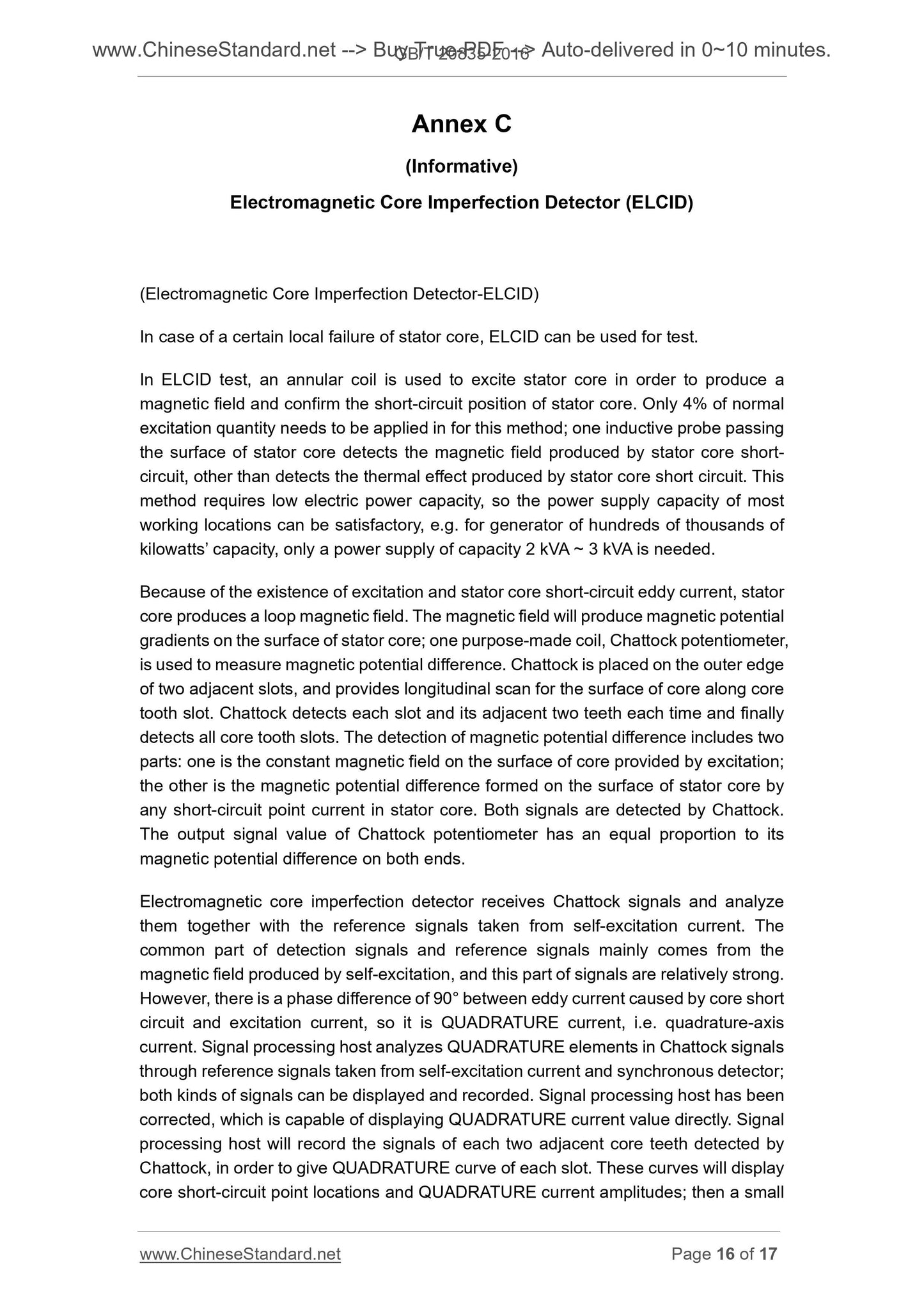1
/
of
8
www.ChineseStandard.us -- Field Test Asia Pte. Ltd.
GB/T 20835-2016 English PDF (GB/T20835-2016)
GB/T 20835-2016 English PDF (GB/T20835-2016)
Regular price
$85.00
Regular price
Sale price
$85.00
Unit price
/
per
Shipping calculated at checkout.
Couldn't load pickup availability
GB/T 20835-2016: Guides for Magnetization Test of Generator Stator Core
Delivery: 9 seconds. Download (and Email) true-PDF + Invoice.Get Quotation: Click GB/T 20835-2016 (Self-service in 1-minute)
Newer / historical versions: GB/T 20835-2016
Preview True-PDF
Scope
This Standard specifies the test preparation, test requirements, test method and corequality evaluation criteria for magnetization test of generator stator core.
This Standard applies to magnetization test of cylindrical rotor synchronous generator
and water-turbine generator of voltage class 6.3 kV and above; it is used for the
inspection of assembly quality of generator stator core.
Basic Data
| Standard ID | GB/T 20835-2016 (GB/T20835-2016) |
| Description (Translated English) | Guides for Magnetization Test of Generator Stator Core |
| Sector / Industry | National Standard (Recommended) |
| Classification of Chinese Standard | K20 |
| Classification of International Standard | 29.160.20 |
| Word Count Estimation | 15,129 |
| Date of Issue | 2016-02-24 |
| Date of Implementation | 2016-09-01 |
| Older Standard (superseded by this standard) | GB/T 20835-2007 |
| Quoted Standard | GB/T 2521-2008; GB/T 20160 |
| Regulation (derived from) | National Standard Announcement No |
| Issuing agency(ies) | General Administration of Quality Supervision, Inspection and Quarantine of the People's Republic of China, Standardization Administration of the People's Republic of China |
| Summary | This standard specifies the test preparation, test requirements, test methods and core quality differences of the stator core magnetization test of the generator. This standard is applicable to the magnetostatic test of the stator core of the non-salient pole synchronous generator and the hydro-generator with the voltage grade of 6.3 kV and above, and is used for checking the assembly quality of the generator stator core. |
Share
